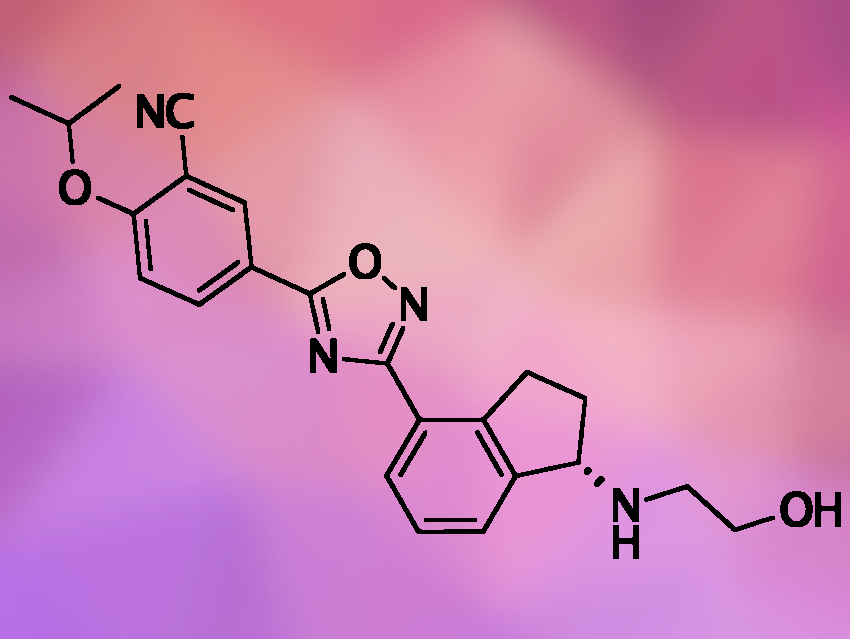Ozanimod (pictured) has been approved last year by the U.S. Food and Drug Administration (FDA) and the European Medicines Agency (EMA) to treat certain forms of multiple sclerosis (MS). The drug selectively modulates the activity of sphingosine-1-phosphate receptors, which are targets of the lipid signaling molecule sphingosine-1-phosphate (S1P). Ozanimod contains a chiral aminoindanyl fragment (pictured at the bottom right) bonded to a central 1,2,4-oxadiazole.
Maurizio Taddei, University of Siena, Italy, and colleagues have developed a five-step enantioselective synthesis of Ozanimod under environmentally sustainable conditions. The team started from 4-cyano indanone, which was first converted to an acetal and then reacted with NH2OH to give an amidoxime. This intermediate was reacted with 3-cyano-4-isopropoxybenzoic acid to form the central 1,2,4-oxadiazole ring. The acetal protecting group was removed and the resulting ketone was reacted with ethanolamine to introduce the amino-substitutent at the indanyl fragment. In this last step, the stereogenic center was introduced via imine asymmetric transfer hydrogenation (ATH) using Wills’ catalysts.
Compared to the patented route, which provides 23 % overall yield in eight steps, the new process is more efficient with 55 % overall yield and 99 % ee. Introducing the stereocenter in the last step reduces the number of controls required to ensure the enantiomeric purity of the drug.
- Enantioselective synthesis of Ozanimod, the active pharmaceutical ingredient of a new drug for multiple sclerosis,
Claudio Cianferotti, Giuseppe Barreca, Venkatesh Bollabathini, Luca Carcone, Damian Gainger, Samantha Staniland, Maurizio Taddei,
Eur. J. Org. Chem. 2021.
https://doi.org/10.1002/ejoc.202100058




